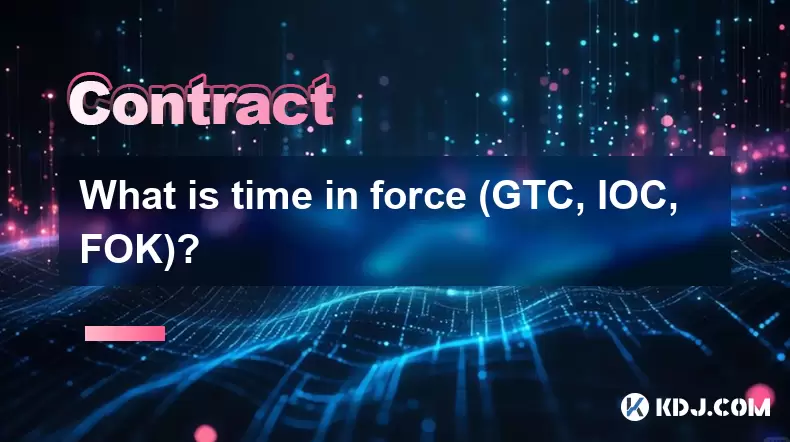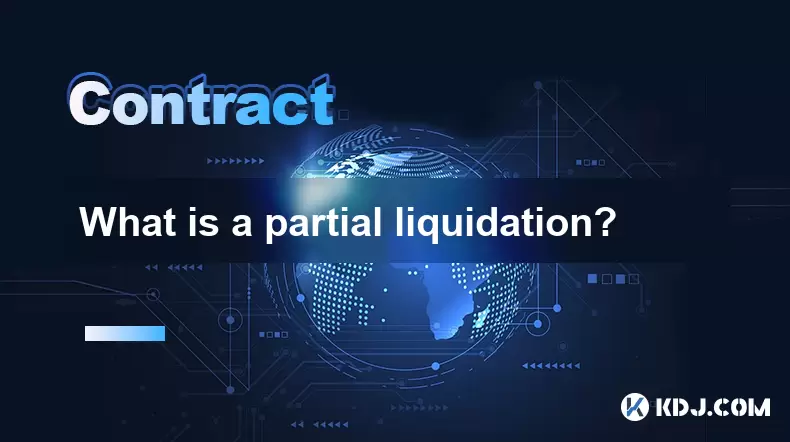-
 Bitcoin
Bitcoin $118000
0.31% -
 Ethereum
Ethereum $3560
-0.99% -
 XRP
XRP $3.435
-0.76% -
 Tether USDt
Tether USDt $1.000
-0.01% -
 BNB
BNB $731.8
-0.96% -
 Solana
Solana $177.3
-0.64% -
 USDC
USDC $0.9999
-0.04% -
 Dogecoin
Dogecoin $0.2419
2.59% -
 TRON
TRON $0.3205
-1.58% -
 Cardano
Cardano $0.8278
0.18% -
 Hyperliquid
Hyperliquid $44.64
0.22% -
 Stellar
Stellar $0.4648
-1.54% -
 Sui
Sui $3.794
-2.00% -
 Chainlink
Chainlink $18.31
2.04% -
 Hedera
Hedera $0.2672
-0.49% -
 Avalanche
Avalanche $24.26
1.57% -
 Bitcoin Cash
Bitcoin Cash $506.9
-1.63% -
 Shiba Inu
Shiba Inu $0.00001474
-0.40% -
 UNUS SED LEO
UNUS SED LEO $8.991
0.23% -
 Litecoin
Litecoin $103.8
0.28% -
 Toncoin
Toncoin $3.183
-2.68% -
 Polkadot
Polkadot $4.298
-0.09% -
 Uniswap
Uniswap $10.08
-1.02% -
 Monero
Monero $325.5
0.60% -
 Ethena USDe
Ethena USDe $1.001
-0.01% -
 Bitget Token
Bitget Token $4.886
-1.39% -
 Pepe
Pepe $0.00001311
-1.56% -
 Dai
Dai $1.000
0.01% -
 Aave
Aave $316.5
-1.08% -
 Cronos
Cronos $0.1219
0.89%
What is a stablecoin-margined contract vs a coin-margined contract?
Stablecoin-margined contracts use stablecoins like USDT for margin, offering price stability and predictable liquidation risks, making them ideal for traders seeking lower volatility and clearer profit/loss calculations.
Jul 15, 2025 at 06:36 pm

Understanding the Difference Between Stablecoin-Margined Contracts and Coin-Margined Contracts
In the world of cryptocurrency derivatives, margin plays a crucial role in determining how traders can manage their positions. Traders often encounter two primary types of contracts: stablecoin-margined contracts and coin-margined contracts. Each type has distinct characteristics that affect trading strategies, risk exposure, and overall profitability.
What Is a Stablecoin-Margined Contract?
A stablecoin-margined contract is a type of futures or perpetual contract where the margin used to open and maintain a position is denominated in stablecoins, such as USDT (Tether) or USDC (USD Coin). These assets are designed to maintain a 1:1 peg with fiat currencies like the U.S. dollar, offering price stability compared to volatile cryptocurrencies.
This type of contract allows traders to avoid crypto price volatility affecting their margin balance, which means they can better predict liquidation risks. For example, if you're long on BTC/USDT using a stablecoin-margined contract, your margin remains in USDT, so fluctuations in BTC's price won't directly impact the value of your collateral unless it triggers a liquidation.
What Is a Coin-Margined Contract?
A coin-margined contract, also known as an inverse contract, uses the underlying cryptocurrency itself as margin. For instance, if you're trading ETH/BTC, you may need to post ETH as collateral. This setup introduces additional volatility into the margin account, as the value of the margin fluctuates along with the asset's market price.
Traders who use coin-margined contracts must be cautious about margin erosion due to price swings. If the price of the margined coin drops significantly while you're holding a leveraged short position, your effective margin decreases, increasing the likelihood of liquidation even if the trade direction is correct.
How Do Profit and Loss Calculations Differ?
Profit and loss (PnL) calculations vary between these two contract types due to differences in denomination and margin usage.
- In stablecoin-margined contracts, PnL is calculated in stablecoins, making it straightforward for traders to understand gains and losses without worrying about crypto price movements affecting their margin.
- In coin-margined contracts, PnL is settled in the underlying cryptocurrency, meaning that profits might increase or decrease based on the price movement of the margined asset, not just the trade outcome.
For example, if you short BTC with BTC as your margin and BTC's price falls, your realized profit could be higher in USD terms even if the trade was only slightly profitable in BTC terms.
Which One Should You Choose Based on Risk Tolerance?
Choosing between stablecoin-margined and coin-margined contracts depends largely on a trader’s risk appetite and strategy.
- Stablecoin-margined contracts are generally preferred by traders seeking predictability and lower risk, especially those new to derivatives trading or those who want to avoid compounding losses from margin volatility.
- Coin-margined contracts appeal to experienced traders comfortable with higher risk and volatility, particularly those who already hold significant amounts of the underlying crypto and are willing to accept margin fluctuations as part of their trading approach.
Additionally, traders bullish on a particular cryptocurrency might opt for coin-margined contracts because any appreciation in the margin asset's value could provide additional buying power or cushion against losses.
How to Open Positions in Stablecoin-Margined Contracts
To trade a stablecoin-margined contract, follow these steps:
- Ensure you have sufficient stablecoins (e.g., USDT or USDC) in your futures wallet on the exchange.
- Navigate to the derivatives or futures section of the platform.
- Select the trading pair you wish to trade, ensuring that the margin type is set to stablecoin.
- Set your leverage level carefully — higher leverage increases both potential gains and risks.
- Place your order (limit or market), and monitor your position size and liquidation price closely.
Exchanges typically allow users to switch between margin types, but doing so while holding open positions may trigger margin adjustments or forced closures.
How to Open Positions in Coin-Margined Contracts
Opening a position in a coin-margined contract involves similar steps but with different considerations:
- Make sure you have enough of the underlying cryptocurrency in your futures wallet.
- Go to the futures trading interface and select the appropriate trading pair.
- Change the margin mode to "coin-margined" or "inverse", depending on the platform's terminology.
- Input the amount of leverage you want to use, keeping in mind that your margin will fluctuate with the price of the coin.
- Execute your trade and keep a close eye on your effective margin ratio and liquidation threshold.
Because of the volatility associated with coin-margined contracts, traders should frequently check their positions and consider setting stop-loss orders to mitigate sudden price moves.
Frequently Asked Questions
Q: Can I switch between stablecoin-margined and coin-margined contracts on the same exchange?
Yes, most major exchanges allow users to switch between margin types. However, switching while holding open positions may result in automatic adjustments or closure of trades to maintain margin requirements.
Q: Are there fees associated with using either type of contract?
Trading fees are generally consistent regardless of margin type. However, funding fees for perpetual contracts may vary slightly depending on the margin asset used.
Q: Does one type of contract offer more leverage than the other?
No, maximum leverage levels are usually determined by the exchange and asset pair, not the margin type. However, the effective leverage may feel different due to margin volatility in coin-margined contracts.
Q: Which margin type is better for day trading versus long-term holding?
Stablecoin-margined contracts are typically favored for day trading due to their predictable margin behavior, while coin-margined contracts may suit longer-term traders who are comfortable managing crypto-backed margin risks.
Disclaimer:info@kdj.com
The information provided is not trading advice. kdj.com does not assume any responsibility for any investments made based on the information provided in this article. Cryptocurrencies are highly volatile and it is highly recommended that you invest with caution after thorough research!
If you believe that the content used on this website infringes your copyright, please contact us immediately (info@kdj.com) and we will delete it promptly.
- American Eagle Palladium Coin Set for September 4 Release: What to Expect
- 2025-07-20 00:35:12
- FloppyPepe: Could This Meme Coin Be Your Ticket to Crypto Millionaire Status with a 15,800% ROI?
- 2025-07-20 00:50:12
- Ethereum's 2025 ATH: Could These 20x Tokens Be Your Golden Ticket?
- 2025-07-20 00:35:12
- Solana, Altcoin Bets, and the Next Big Thing: What's the Play?
- 2025-07-20 01:15:12
- BlockDAG's NO VESTING PASS: A 2025 Crypto Game Changer?
- 2025-07-20 01:15:12
- Crypto Millionaires: Riding the Bull Market Wave
- 2025-07-20 01:15:13
Related knowledge

What is a maker vs a taker fee?
Jul 19,2025 at 01:14am
Understanding the Basics of Cryptocurrency Exchange FeesIn the world of cryptocurrency trading, maker vs taker fees are a fundamental concept that eve...

How to analyze Bitcoin futures data from CME?
Jul 19,2025 at 05:22pm
Understanding Bitcoin Futures on CMEBitcoin futures on the CME Group (Chicago Mercantile Exchange) represent a regulated financial instrument that all...

How to understand the liquidation price?
Jul 19,2025 at 10:00pm
What Is a Liquidation Price in Cryptocurrency Trading?In the realm of cryptocurrency futures and margin trading, the liquidation price refers to the s...

What is time in force (GTC, IOC, FOK)?
Jul 19,2025 at 08:57am
Understanding Time in Force in Cryptocurrency TradingIn the world of cryptocurrency trading, the Time in Force (TIF) is a crucial parameter that deter...

What is a partial liquidation?
Jul 19,2025 at 01:49am
Understanding the Basics of Partial LiquidationIn the world of cryptocurrency trading, especially within leveraged positions, partial liquidation refe...

How to find good entry and exit points for Bitcoin futures?
Jul 19,2025 at 05:14pm
Understanding Bitcoin Futures and Their Unique CharacteristicsBitcoin futures are derivative contracts that allow traders to speculate on the future p...

What is a maker vs a taker fee?
Jul 19,2025 at 01:14am
Understanding the Basics of Cryptocurrency Exchange FeesIn the world of cryptocurrency trading, maker vs taker fees are a fundamental concept that eve...

How to analyze Bitcoin futures data from CME?
Jul 19,2025 at 05:22pm
Understanding Bitcoin Futures on CMEBitcoin futures on the CME Group (Chicago Mercantile Exchange) represent a regulated financial instrument that all...

How to understand the liquidation price?
Jul 19,2025 at 10:00pm
What Is a Liquidation Price in Cryptocurrency Trading?In the realm of cryptocurrency futures and margin trading, the liquidation price refers to the s...

What is time in force (GTC, IOC, FOK)?
Jul 19,2025 at 08:57am
Understanding Time in Force in Cryptocurrency TradingIn the world of cryptocurrency trading, the Time in Force (TIF) is a crucial parameter that deter...

What is a partial liquidation?
Jul 19,2025 at 01:49am
Understanding the Basics of Partial LiquidationIn the world of cryptocurrency trading, especially within leveraged positions, partial liquidation refe...

How to find good entry and exit points for Bitcoin futures?
Jul 19,2025 at 05:14pm
Understanding Bitcoin Futures and Their Unique CharacteristicsBitcoin futures are derivative contracts that allow traders to speculate on the future p...
See all articles

























































































